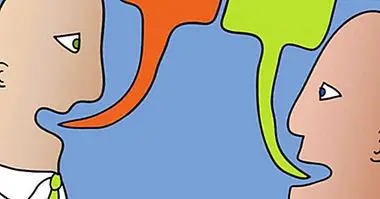The theory of broken windows and Zimbardo's experiment
Let's think for a moment about the image projected by a building with a broken window, which takes months or even years. Probably, as we are concentrating on it, let us imagine how the building in question is covered by a layer of dust, as well as the fact that it is poorly attended. It is probable that we even imagine it totally abandoned.
The thought that many have come to mind is "nobody cares anymore". And this thought can be dangerous: the behavior of many people towards the building in question will be modified by being perceived with respect to it. This is what the theory of broken windows proposes , of which we are going to talk throughout this article.
- Related article: "The Stanford Prison Experiment of Philip Zimbardo"
The broken windows theory
The theory of windows is a well-known theory linked to criminology, which proposes mainly existence of emergence and infection of criminal conduct from the perception of the relevance or absence of relevance of the stimulus or element with which we treat. Thus, how we perceive what surrounds us influences our behavior towards it, and can even modify our consideration of what is moral, legal and legitimate about what is being done.
The image that the name suggests the theory is a clear analogy: the existence of a broken window implies a certain abandonment of the building or vehicle in question, something that diminishes the responsibility towards what happens to it. Likewise, the damages presented make it easier to add, at the beginning little by little but with time more pronounced, other damages: this is what happens with abandoned buildings, to which adolescents and children usually throw paving stones to break the rest of windows The incivility is contagious Considering that the attack is unimportant and that nobody cares .
The opposite would also be applicable: a good care of the elements that are part of a stimulus make it difficult to be considered unappreciated and that univocal behaviors appear by mere contagion.
This seemingly simple theory, developed at the criminological level by Wilson and Kelling in 1982 from the results of an experiment by Philip Zimbardo, has profound implications: it is the perception of what surrounds us that explains our behavior towards it . The idea that something has little value or is abandoned facilitates criminality, as well as the fact that obvious incivilities have been carried out on which no action has been taken (for example, a wall with a graffiti that has not been erased). facilitates that others also draw on it), something to take into account at the institutional level when it comes to preventing some behaviors and at the same time revitalizing some areas of the cities.
And not only at the criminal level: also in many other senses this theory can push us to monitor our behavior about what and what we want (Do not forget that the broken window, although in this case it can be a real stimulus, it is also usable as a metaphor).
- Related article: "What is Social Psychology?"
The Zimbardo experiment
The theory of broken windows arose from an experiment in social psychology carried out by Philip Zimbardo, in 1969. For this, he would have two cars in perfect state of identical color, make and model in two different points: the Bronx ( New York neighborhood with very few resources known for high crime rates, especially at that time) and Palo Alto (rich California area with little crime). Once there, I would tear off license plates and leave the doors open, in order to observe what happened.
Initially, the behavior observed in both was different. The car parked in the Bronx was quickly robbed , said car being practically destroyed in a few days. By cons, the car parked in Palo Alto remained unharmed for a week.
However, the experiment continued: after that time Zimbardo decided to attack the vehicle and cause some damage, including the rupture of one of its windows, and later retired to observe. From that moment, seeing clear signs of abandonment of the vehicle, the residents of Palo Alto had the same behavior to the car that the Bronx: looted and destroyed.
The conclusions of the experiment supported the theory of broken windows: the perception that something is abandoned and that its fate does not matter to anyone can trigger behaviors that can even contradict the beliefs of those who carry them out, can reach the commission of crimes or negligence or ignorance regarding what happens with that element.
Likewise, we can not fail to see that what at first sight and could lead one to think of the existence of poverty as an element that elicits criminal behavior has proven to be false: the acts committed against the Palo Alto car were the and in this case the purchasing power of those who committed them was high. Although today this is something that misses very few people, at that time there was still a high level of classism in the social perception that considered it unlikely that people with high socio-economic positions would commit crimes.
A theory that can be extrapolated to other realities
The broken windows theory has been associated with crime and crime in the form of robbery, theft and vandalism , but we can also observe a similar effect in small things of the day to day of which we do not realize. This is what happens for example in relationships, whose neglect can lead to the emergence of conflicts and ruptures, the escalation of violence in a fight between two people if no control mechanism is put in place or the fact of lying, that can lead to the need to elaborate more and more complex lies and at the same time that others do not believe us.
It has also been observed as at the urban level the presence of specific points where there is neglect and neglect are likely to generate an increase around neglected areas and even the commission of small crimes. Example of this would be the neighborhoods that little by little have reduced their social prestige, in some cases until they are considered marginal.
But in addition to the above, it can also be associated with much more serious criminal acts (although in these cases a certain component of lack of empathy, values and responsibility is also required).
For example, today we see how the indigent tend to be systematically ignored by most people, and even in some cases they are attacked and vexed. Although the latter is not common, it can be associated with the theory of broken windows: it is someone who is socially not seen or taken into account, someone abandoned by society, which decreases the level of empathy and concern towards this kind of subject. The same goes for alcoholics and drug addicts.
It is also something that has happened with abandoned and stray animals (although nowadays it is not usual for society to be more aware of animal suffering). Crashes, attacks and persecutions that have even ended the life of the poor animal have been frequent throughout history, especially if the animal had any deformity or disability.
Bibliographic references
- Wagers, M .; Sousa, W. & Kelling, G. (2008) Broken windows. Environmental Criminology and Crime Analysis. UK. William Publishing.



















